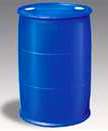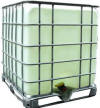|
Mubychem Group, is a mature manufacturing company since generations. Engaged in manufacture and supply of Pharmaceutical Intermediates and Excipients, Oil field & fracturing chemicals, Specialty tailor made grades of chemicals in India. With several manufacturing facilities in India and world wide contacts and toll manufacturers we are exporting to all the countries in the world.. |
The company and associated units have certificates & accreditations like FDA - GMP approval; ISO-9001 Certified; "REACH" Registered; ISO-22000; Kosher Certified; Halal Certified; HACCP. We offer Commercial Pure & Pharmacopoeia IP BP USP FCC Food Grade ACS AR Analytical Reagent Grades of Chemicals |
|
SDS MSDS of PCB Copper Etchant or Ammoniacal Etchant Manufacturers
For Buying Ammonical Etchant Please visit Ammoniacal Etchant Manufacturers
Ammonical or Ammoniacal Etchant SDS MSDS Sheet; Material Safety Data Sheet
1. Product Identification
MSDS Name: Ammoniacal Etchant, Copper Etchant, PCB Etchant
CAS No.: Mixture.
2. Hazards Identification
GHS, Globally Harmonized System Classification in accordance with 29 CFR 1910
Classification according to Regulation (EC) No 1272/2008
Acute toxicity, Oral (Category 4), H302
Eye damage (Category 1), H318
Hazardous to the aquatic environment, acute hazard (Category 1) H400
Labeling according GHS USA & Regulation (EC) No 1272/2008
GHS Label Elements  Irritant |
GHS Label Elements |
Signal Words: Warning
Hazard statements:
H302 Harmful if swallowed.
H318 Causes serious eye damage.
H400 Very toxic to aquatic life.
Precautionary statements:
P262 Do not get in eyes, on skin, or on clothing.
P264 Wash skin thoroughly after handling.
P270 Do not eat, drink or smoke when using this product.
P273 Avoid release to the environment.
P280 Wear protective gloves/protective clothing/eye protection/face protection.
P314 Get Medical advice/attention if you feel unwell.
P301+P312 IF SWALLOWED: Call a POISON CENTER or doctor/physician if you feel unwell.
P305+ P351 + P338 IF IN EYES: Rinse cautiously with water for several minutes. Remove contact lenses, if present and easy to do. Continue rinsing.
P337+P313 If eye irritation persists: Get medical advice/ attention.
P330 Rinse mouth.
P360 Rinse immediately contaminated clothing and skin with plenty of water before removing clothes.
P391: Collect spillage.
P501 Dispose of contents/ container to an approved waste disposal plant.
Classification according to EU Directives 67/548/EEC or 1999/45/EC:
Xn Harmful R22
Xi Irritant R41
For the full text of the H-statements and R-phrases mentioned in this Section, see Section 16.
3. Composition/Information on Ingredients
A.
Ingredient: Ammonium Chloride
CAS No.: 12125-02-9
EINECS EC Number: 235-186-4
Percent: 15 - 25%
B.
Ingredient: Ammonium Hydroxide
CAS No.: 1336-21-6
EINECS EC Number: 215-647-6
Percent: 15 - 20%
C.
Ingredient: Ammonium Carbonate
CAS No.: -
Percent: 2-5%
It is an aqueous solution.
4. First Aid Measures
Inhalation: Remove to fresh air. If not breathing, give artificial respiration. If breathing is difficult, give oxygen. Get medical attention.
Ingestion: Never give anything by mouth to an unconscious person. Get medical attention.
Skin Contact: Immediately flush skin with plenty of water for at least 15 minutes. Remove contaminated clothing and shoes. Get medical attention. Wash clothing before reuse. Thoroughly clean shoes before reuse.
Eye Contact: Check for and remove any contact lenses. In case of contact, immediately flush eyes with plenty of water for at least 15 minutes. Cold water may be used. Get medical attention.
5. Fire Fighting Measures
Fire: Ammoniacal etchant is not considered to be a fire hazard.
Explosion: It is not considered to be an explosion hazard.
Fire Extinguishing Media: Use any means suitable for extinguishing surrounding fire. Water spray may be used to keep fire exposed containers cool.
Special Information: In the event of a fire, wear full protective clothing and NIOSH-approved self-contained breathing apparatus with full face piece operated in the pressure demand or other positive pressure mode.
6. Accidental Release Measures
Small Spill: Use appropriate tools to put the spilled solid in a convenient waste disposal container. Finish cleaning by spreading water on the contaminated surface and dispose of according to local and regional authority requirements.
Large Spill: Absorb spill with inert material (e.g., dry sand or earth), then place in a chemical waste container. Use a shovel to put the material into a convenient waste disposal container. Be careful that the product is not present at a concentration level above TLV. Use water spray curtain to divert vapor drift. Use water spray to reduce vapors. Neutralize spill with a weak acid such as vinegar or acetic acid. Prevent entry into sewers, basements or confined areas; dike if needed. Call for assistance on disposal. It is a corrosive liquid & poisonous liquid. Stop leak if without risk.
7. Handling and Storage
Keep Ammoniacal etchant in a tightly closed container. Protect it from physical damage. Store it in a cool, dry, ventilated area away from sources of heat, moisture and incompatibilities. Containers of Ammoniacal etchant material may be hazardous when empty since they retain product residues (dust, solids); observe all warnings and precautions listed for the product.
8. Exposure Controls/Personal Protection
Airborne Exposure Limits:
Ammonium chloride:
-ACGIH Threshold Limit Value (TLV):
10 mg/m3 (TWA); 20 mg/m3 (STEL) Fume
Airborne Exposure Limits:
For Ammonia:
- OSHA Permissible Exposure Limit (PEL) -
50 ppm (TWA)
- ACGIH Threshold Limit Value (TLV)
25 ppm (TWA), 35 ppm (STEL).
Ventilation System: A system of local and/or general exhaust is recommended to keep employee exposures below the Airborne Exposure Limits. Local exhaust ventilation is generally preferred because it can control the emissions of the contaminant at its source, preventing dispersion of it into the general work area. Please refer to the ACGIH document, Industrial Ventilation, A Manual of Recommended Practices, most recent edition, for details.
Personal Respirators (NIOSH Approved): If the exposure limit is exceeded and engineering controls are not feasible, a half face piece particulate respirator (NIOSH type N95 or better filters) may be worn for up to ten times the exposure limit or the maximum use concentration specified by the appropriate regulatory agency or respirator supplier, whichever is lowest.. A full-face piece particulate respirator may be worn. If oil particles (e.g. lubricants, cutting fluids, glycerin, etc.) are present, use a NIOSH type R or P filter. For emergencies or instances where the exposure levels are not known, use a full-face piece positive-pressure, air-supplied respirator.
Skin Protection: Wear impervious protective clothing, including boots, gloves, lab coat, apron or coveralls, as appropriate, to prevent skin contact.
Eye Protection: Use chemical safety goggles and/or full face shield where dusting or splashing of solutions is possible. Maintain eye wash fountain and quick-drench facilities in work area.
9. Physical and Chemical Properties
Physical state and appearance: Liquid.
Odor: Ammoniacal.
pH of Ammoniacal etchant : 8-9
Sp. Gravity: 1.2
% Volatile by volume @ 21C (70F): 0
Boiling Point: -
Melting Point: -
Vapor Density (Air=1): 1.9
Vapor Pressure (mm Hg): NA.
Evaporation Rate (BuAc=1): No information found
10. Stability and Reactivity
Stability: Ammonical etchant is stable under ordinary conditions of use and storage.
Hazardous Decomposition Products: Ammoniacal etchant involvement in a fire causes decomposition to form hydrogen chloride and ammonia.
Hazardous Polymerization: Will not occur.
Incompatibilities: Concentrated acids, strong bases, silver salts, potassium chlorate, ammonium nitrate, bromine trifluoride and iodine heptafluoride. Ammoniacal etchant reacts explosively with potassium chlorate or bromine trifluoride, and violently with bromide pentafluoride, ammonium compounds, nitrates, and iodine heptafluoride. Explosive nitrogen trichloride may result from reaction of Ammoniacal etchant and hydrogen cyanide.
Conditions to Avoid: Heat, moisture, incompatibles.
11. Toxicological Information
TOXICITY DATA: (44 % AMMONIUM HYDROXIDE); Oral Toxicity: LD50: 350 Mg/Kg (Rat)
TOXICITY DATA: (100 % AMMONIUM CHLORIDE); Oral Toxicity: LD50: 1650 Mg/Kg (Rat), LD50: 1300 Mg/Kg (Mouse)
TOXICITY DATA: (100 % AMMONIUM CARBONATE); Intravenous Toxicity: LD50: 96 Mg/Kg (Mouse)
12. Ecological Information
BOD5 and COD: Not available.
Products of Biodegradation: Possibly hazardous short term degradation products are not likely. However, long term degradation products may arise.
Toxicity of the Products of Biodegradation: The products of degradation are less toxic than the product itself.
Biological effects: Highly toxic for aquatic organisms.
13. Disposal Considerations
Whatever cannot be saved for recovery or recycling should be managed in an appropriate and approved waste disposal facility. Processing, use or contamination of this product may change the waste management options. State and local disposal regulations may differ from federal disposal regulations. Dispose of container and unused Ammoniacal etchant in accordance with legal requirements.
14. Transport Information
DOT Shipping Name: Corrosive Liquid, Basic, Inorganic, N.O.S.(Ammonium Hydroxide, Ammonium Chloride, Ammonium Carbonate)
DOT Hazard Class: 8
Hazardous Ingredients: Ammonium Hydroxide, Ammonium Chloride, Ammonium Carbonate
Identification Number: UN 3266
Packing Group: II
Label: Corrosive
15. Regulatory Information
USA
TSCA:
The mixture contains ingredients listed on the TSCA inventory.
Section 313
This product contains ammonia and is subject to reporting as ammonia and ammonium ion on an ammonia basis = 1.6 Lb/Gal.
OSHA: Hazardous by definition of Hazard Communication Standard (29 CFR 1910.1200).
California No Significant Risk Level:
This product may contain chemicals known to the state of California to cause cancer, or birth defects or other reproductive harm.
This product contains ingredients that are listed for disclosure or reporting in the states of California, Connecticut, Illinois, Louisiana, Massachusetts, Minnesota, North Carolina, New Jersey, New York, Pennsylvania, Rhode Island, and Texas.
Canada
DSL/NDSL: Listed on the Domestic Substances List.
WHMIS: Ammonium hydroxide: item number 96, reporting at 1% threshold; Ammonium chloride is item number 88 from the Ingredient Disclosure List and is subject to reporting at 1% threshold.
16. Other Information
H302 = Harmful if swallowed.
H318 = Causes serious eye damage.
H400 = Very toxic to aquatic life.
Xn = Harmful
Xi = Irritant
Risk Phrases:
R 22 = Harmful if swallowed.
R41= Risk of serious damage to eyes.
16. Other Information
Disclaimer:
***************************
Our company provides this Ammoniacal etchant SDS information
sheet contained herein in good faith but makes no representation
as to its comprehensiveness or accuracy. This Ammoniacal etchant
MSDS sheet is intended only as a guide to the appropriate
precautionary handling of the material by a properly trained person
using this product. Individuals receiving the information must
exercise their independent judgment in determining its
appropriateness for a particular purpose.
***************************
PCB Copper Etchant
Manufacturers
Ammoniacal Etchant manufacturer at:
MUBY CHEMICALS GROUP
DONGRI-CHINCHBUNDER, MUMBAI 400009, INDIA
TEL: (OFFICE)
91-22-23770100, 91-22-23726950, 91-22-23774610, 23723564.
e-mail: info@mubychem.com










